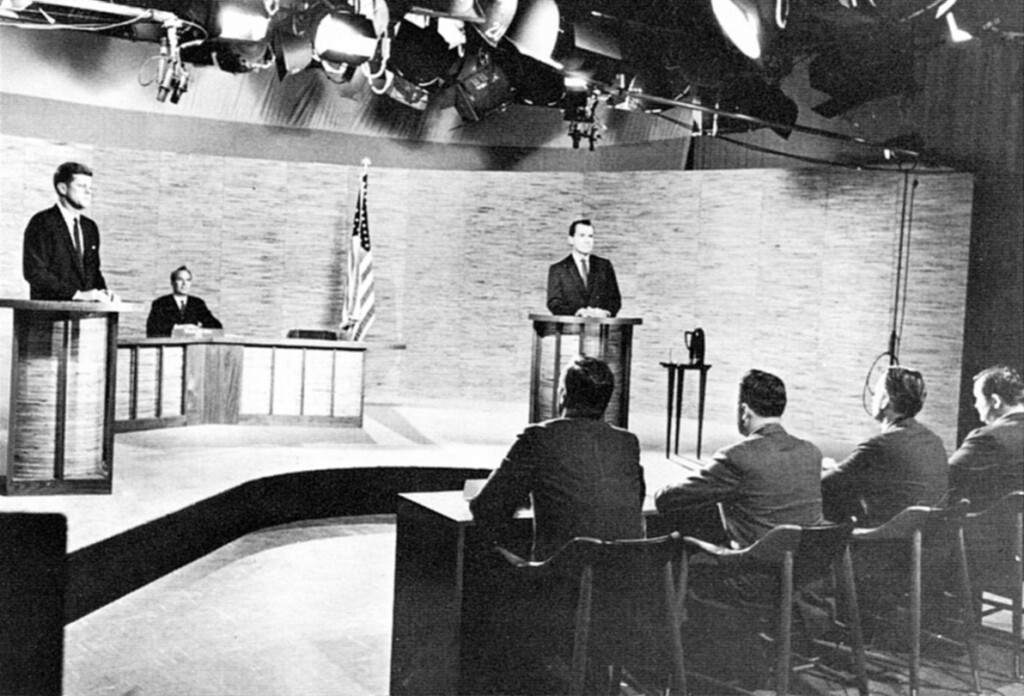
The first televised U.S. presidential debate between John F. Kennedy and Richard Nixon on September 26th 1960 remains one of the most significant moments in political history.
It was a watershed event that not only changed the course of the election but also underscored the transformative power of television as a medium. For the first time, millions of Americans had the opportunity to see their potential leaders in action on screen, with the visual aspect having a dramatic influence on public perception.
While the outcome of this debate may have been interpreted differently depending on whether voters watched it on television or listened to it on the radio, the lessons it taught about media and communication are undeniable.
This historic debate is a perfect case study in how television shaped public opinion and solidified its dominance over other mediums in the political arena. In this article, we will examine the significance of the debate, the contrasting performances of Kennedy and Nixon, and the pivotal role television played in reshaping political communication in the modern era.
The Historical Context: America in the 1960s
In 1960, America stood at the brink of a new era. The post-war boom had brought unprecedented economic prosperity, but it was also a time of social and political turbulence. The Cold War was intensifying, civil rights struggles were gaining momentum, and the country faced complex decisions about its role on the world stage. Against this backdrop, the U.S. presidential race featured two men with vastly different backgrounds: John F. Kennedy, a young, charismatic senator from Massachusetts, and Richard Nixon, the experienced and well-known vice president under Dwight D. Eisenhower.
The race between Kennedy and Nixon was tight, with both men representing opposing views on the future direction of the country. Nixon, a seasoned politician, was a known quantity with extensive foreign policy experience, while Kennedy, a relative newcomer on the national stage, embodied youthful energy and a fresh perspective. Their campaign strategies were carefully crafted, but neither could have foreseen how drastically the medium of television would shift the tide of the election.
The First Televised Presidential Debate: A New Era
On September 26, 1960, over 70 million Americans tuned in to watch the first-ever televised presidential debate, a number that constituted a significant portion of the electorate. For many, this would be the first time they saw the two candidates side by side.
It was an unprecedented opportunity for voters to make direct comparisons based not only on policy, but on appearance, demeanour, and the ability to communicate effectively under pressure.
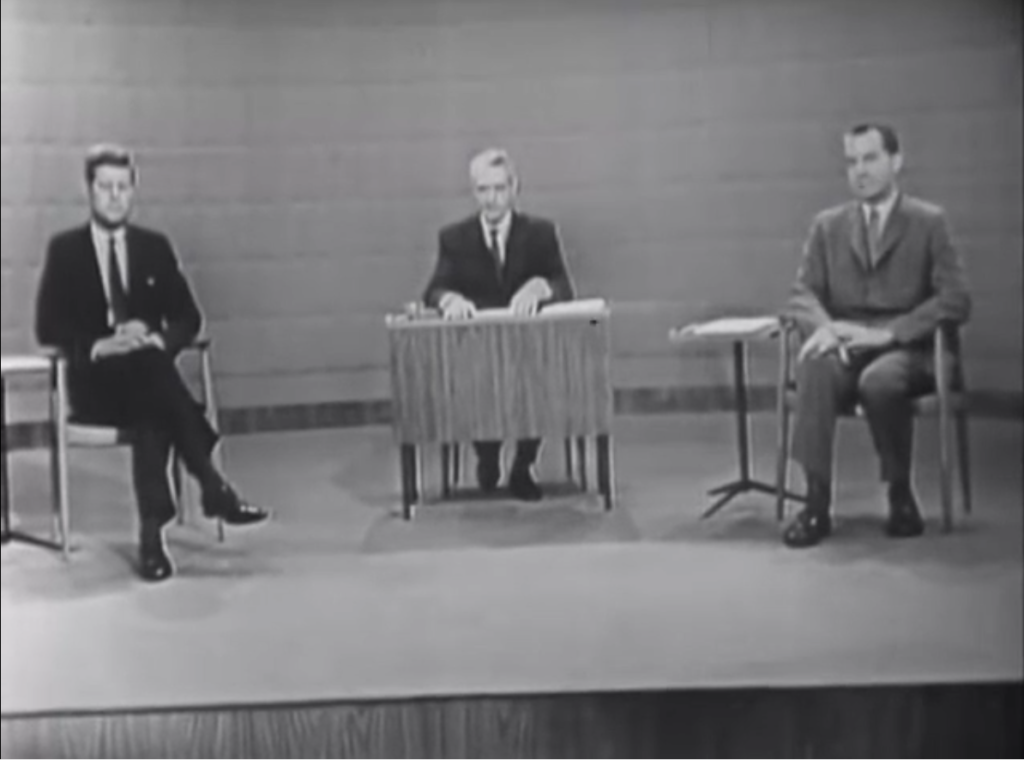
From the outset, the two candidates looked poles apart. Kennedy looked relaxed and entirely confident with his legs crossed and hands in his lap, and Nixon looked awkward with his legs and hands not being congruent to what he said. He looked like he wanted to get up and leave the stage.
The stage was set for a confrontation that would challenge conventional wisdom about debates. In the past, radio had been the dominant medium, and it focused on content, oratory, and the ability to persuade with words alone. But television brought something new to the table — the image. It wasn’t just about what you said, but how you looked while saying it.
Kennedy’s Televised Triumph: The Power of Image

When the cameras began rolling, it was immediately clear that John F. Kennedy had a distinct advantage in front of the camera. His preparation had been meticulous. He understood that the medium of television required not just verbal dexterity, but also a commanding and composed appearance. Kennedy’s decision to wear a dark suit, which contrasted well with the studio’s background, was deliberate. His complexion appeared healthy, his hair neatly styled, and most importantly, he exuded a calm and collected demeanour.
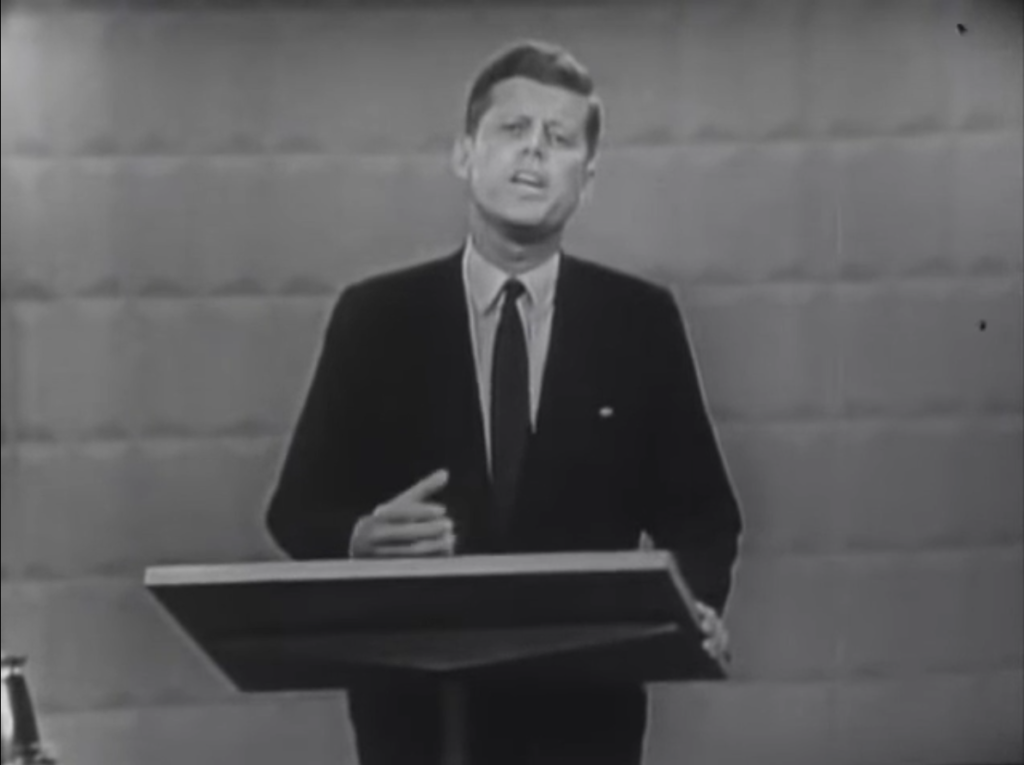
Kennedy’s performance was smooth. He spoke with confidence, maintained steady eye contact with the camera, and appeared unfazed by the pressure of the moment. His youthful vigour, good looks, and composed delivery made him appear presidential, a leader ready to tackle the challenges of the Cold War and a rapidly changing society.
For viewers at home, Kennedy’s calm assuredness was captivating. His coolness under pressure resonated with a nation eager for strong leadership during uncertain times.
Nixon’s Televised Struggle: The Perils of Appearance
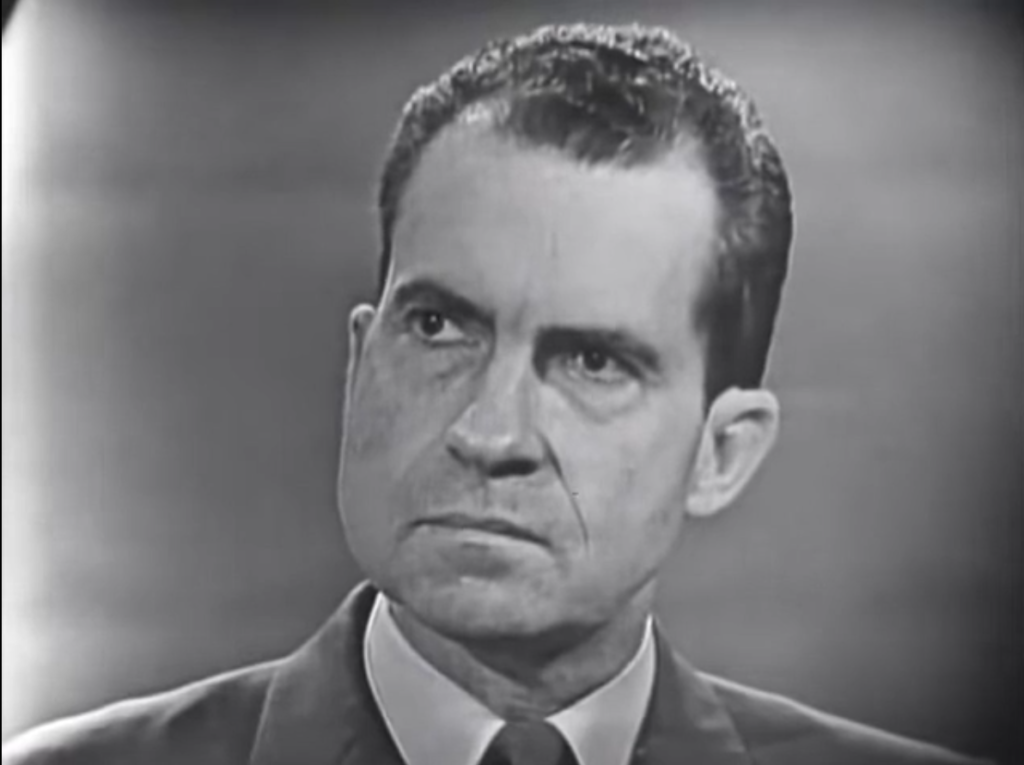
Richard Nixon, by contrast, struggled with the visual demands of television. Arriving at the debate after a gruelling campaign schedule and recovering from a recent hospitalisation, he appeared physically worn.

His decision to forgo makeup exacerbated his pallor under the bright studio lights. He wore a light grey suit, which blended into the backdrop and made him look washed out. Most infamously, Nixon was visibly sweating throughout the debate. The glare of the camera lights only intensified his discomfort, and his five o’clock shadow added to the impression that he was unwell.

While Nixon’s responses were intelligent and articulate — some might say superior in terms of policy substance — the visual cues sent a very different message.

He seemed tense and uncomfortable, constantly mopping his brow and shifting in his seat. His failure to make consistent eye contact with the camera gave the impression that he was evasive, even though his responses were technically sound.
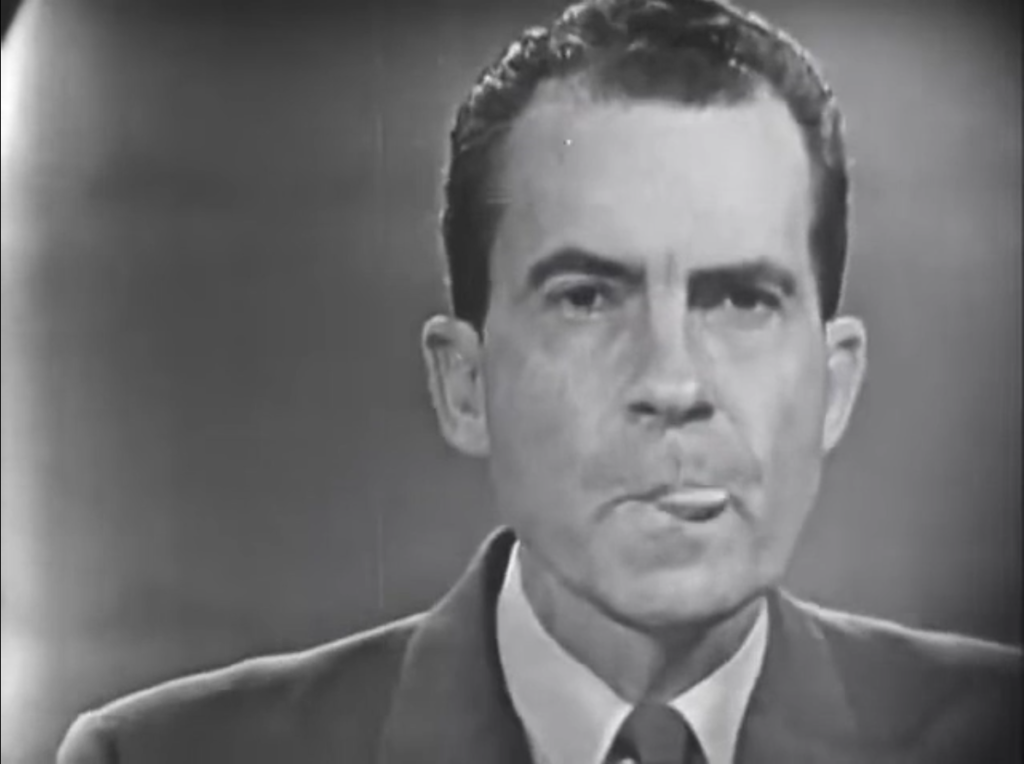
The result was a stark contrast in presentation. Where Kennedy appeared poised and commanding, Nixon seemed nervous and unsure. For the millions of Americans who watched the debate, this visual contrast proved decisive. Image, it turned out, could convey as much meaning as the spoken word, if not more.
The Radio Audience: A Different Perception
While television viewers overwhelmingly felt that Kennedy had won the debate, the response from radio listeners was far more divided, with many even favouring Nixon. On radio, where visual factors played no role, listeners focused entirely on the content of what was said. Nixon, with his detailed understanding of policy, especially foreign affairs, came across as a strong and knowledgeable candidate. His experience as vice president, particularly on issues of global importance like the Cold War, gave him an edge over Kennedy in purely substantive terms.
In the absence of visual distractions, radio listeners heard a debate that was far more equal in terms of policy acumen and rhetorical ability. Nixon’s arguments were cogent and well-structured. Many who listened on the radio were impressed by his knowledge and reassured by his depth of experience. They judged the debate based on content alone, rather than the visual image, and in doing so, many gave Nixon the victory.
Television’s Triumph: The Medium is the Message
The differing perceptions of the debate — depending on whether one experienced it on radio or television — reveal an important truth about communication in the modern world. Television, as a medium, had the power to shape not only how people heard the message, but how they felt about the messenger. This was a revelation to political strategists at the time. The 1960 Kennedy-Nixon debate demonstrated that in the age of television, substance alone was not enough; style, appearance, and presentation could be equally important in shaping public perception.
Television adds an emotional layer to communication. It taps into non-verbal cues, such as facial expressions, body language, and tone of voice, in ways that radio simply cannot. In a sense, television humanises the candidates, making them more relatable or less so, depending on how they present themselves. In the case of Kennedy and Nixon, Kennedy’s calm, confident image played a crucial role in making voters feel comfortable with him as a leader, while Nixon’s more anxious appearance undermined his otherwise strong arguments.
The debate revealed that the medium through which a message is delivered can dramatically alter its reception. What was said was important, but how it was said — and seen — proved to be even more critical.
The Legacy of the 1960 Debate: A New Political Landscape
The Kennedy-Nixon debate permanently altered the landscape of political campaigning. The power of television to sway public opinion had been made clear, and it would only grow in significance in the following decades. Candidates could no longer afford to ignore the importance of image, and political campaigns became increasingly sophisticated in using television to craft a narrative and cultivate a persona.
For John F. Kennedy, the debate marked a turning point in his campaign. He went on to win a narrow victory in the election, which many attributed to his performance in the televised debates. Nixon, on the other hand, learned a hard lesson. His subsequent campaigns took a very different approach to television, with much more attention paid to his appearance and presentation.
Today, we live in a world where visual media, whether television, social media, or digital platforms, is the dominant means of communication. The Kennedy-Nixon debate stands as an early lesson in the power of this medium. It showed that in politics, as in much of life, how you are seen can be just as important as what you say. Television, with its ability to convey both information and emotion, is still the most powerful medium for getting a message across.
Conclusion: The Medium and the Message
The 1960 Kennedy vs. Nixon debate was more than just a contest between two men; it was a battle between two mediums — radio and television. It highlighted the importance of image in the television age, revealing that the visual presentation of a candidate could profoundly affect public perception, regardless of the actual content of their arguments.
For those who watched the debate on television, Kennedy’s cool and calm demeanour made him the clear victor, while those who listened on the radio often felt Nixon had won based on his substance and experience. This divergence in opinion underscores the significant influence that the medium has on how a message is received.
In the years since this debate, television has cemented its role as the most influential medium for political communication. From carefully crafted campaign ads to live debates and interviews, the visual aspect of politics has become an indispensable part of how leaders are judged. The Kennedy-Nixon debate remains a powerful reminder that in the world of modern communication, it’s not just what you say — it’s how you look while saying it.
This shows us the visual image is given much more weight than the audio, and any small detail looks like a grimace, where a fleeting glance or lick of the lips speaks volumes. We unconsciously pick up on these clues and make a decision on the credibility of the person speaking.
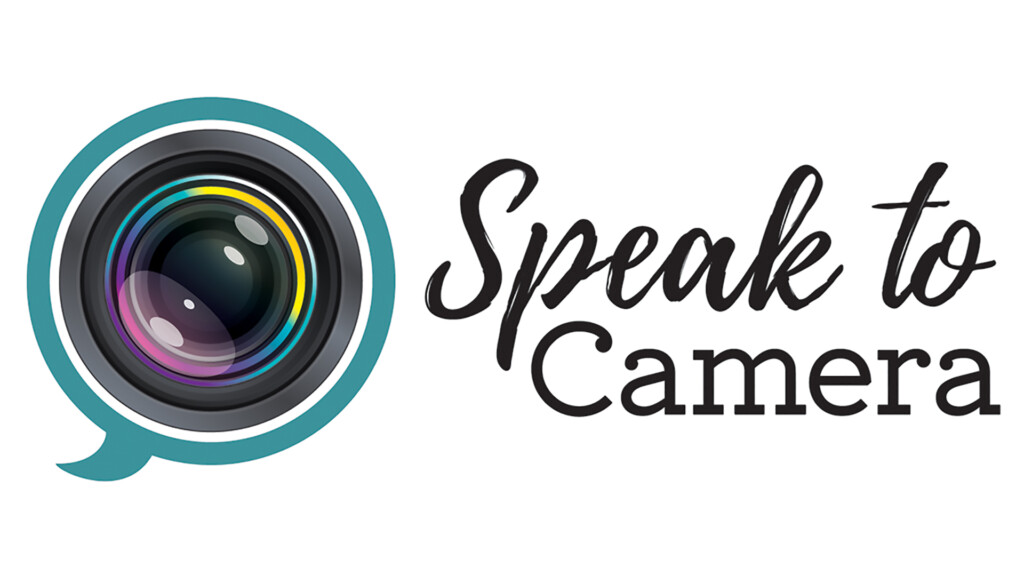
By now you may want to find out how to control these unconscious physical telltale signs of stress and how you can be a great speaker on camera. My Speak to Camera online course and 1–1 coaching is currently open for new applications.
It’s not for everyone, and we have a chat to see if we are a good fit.
For a 100% free webinar masterclass CLICK HERE
For a discussion about your business and how I may be able to help with your speaking-to-camera skills. CLICK HERE
Find me online. Best…John Keedwell. speaktocamera.com
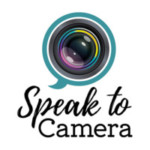
Leave A Comment